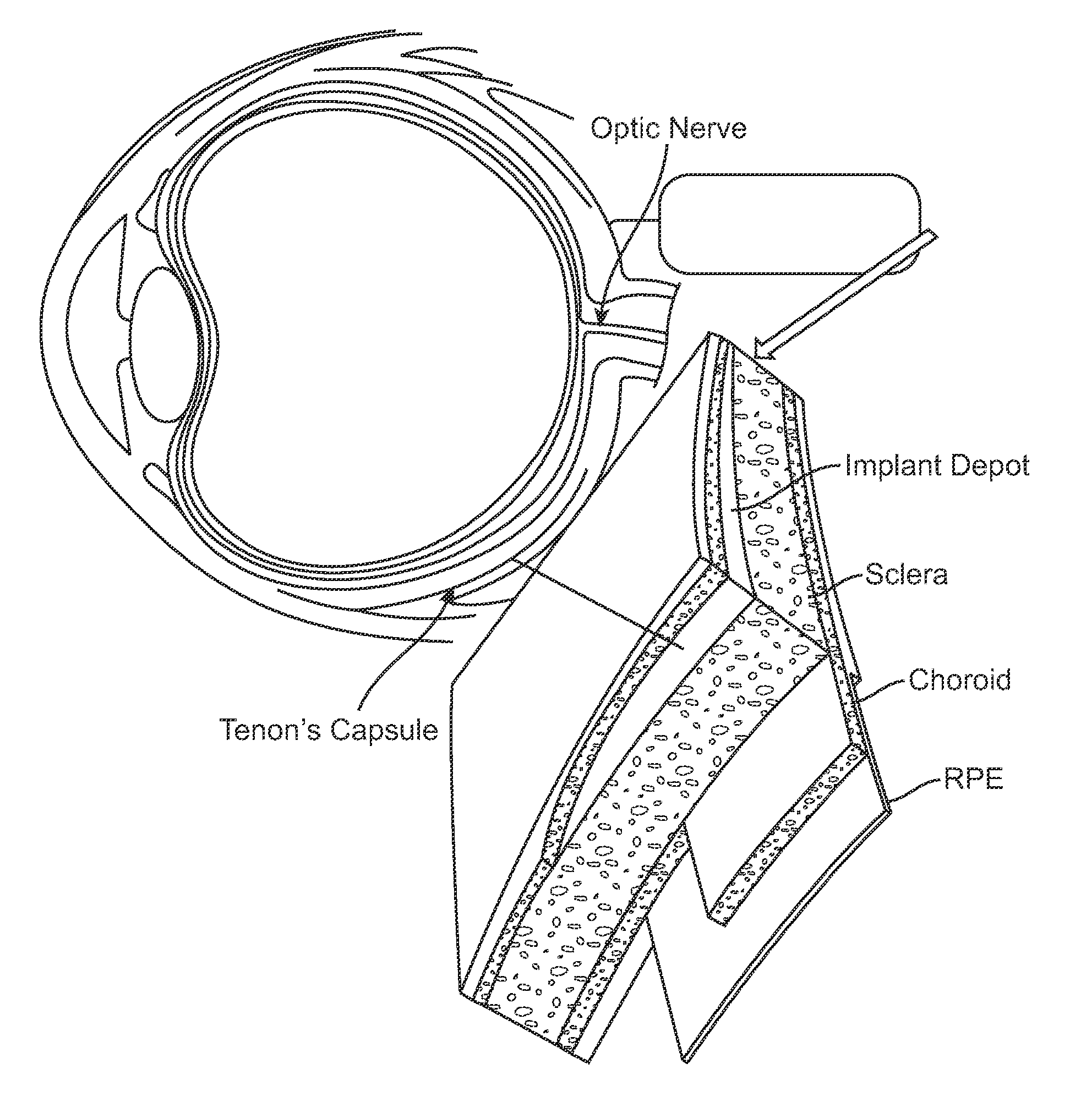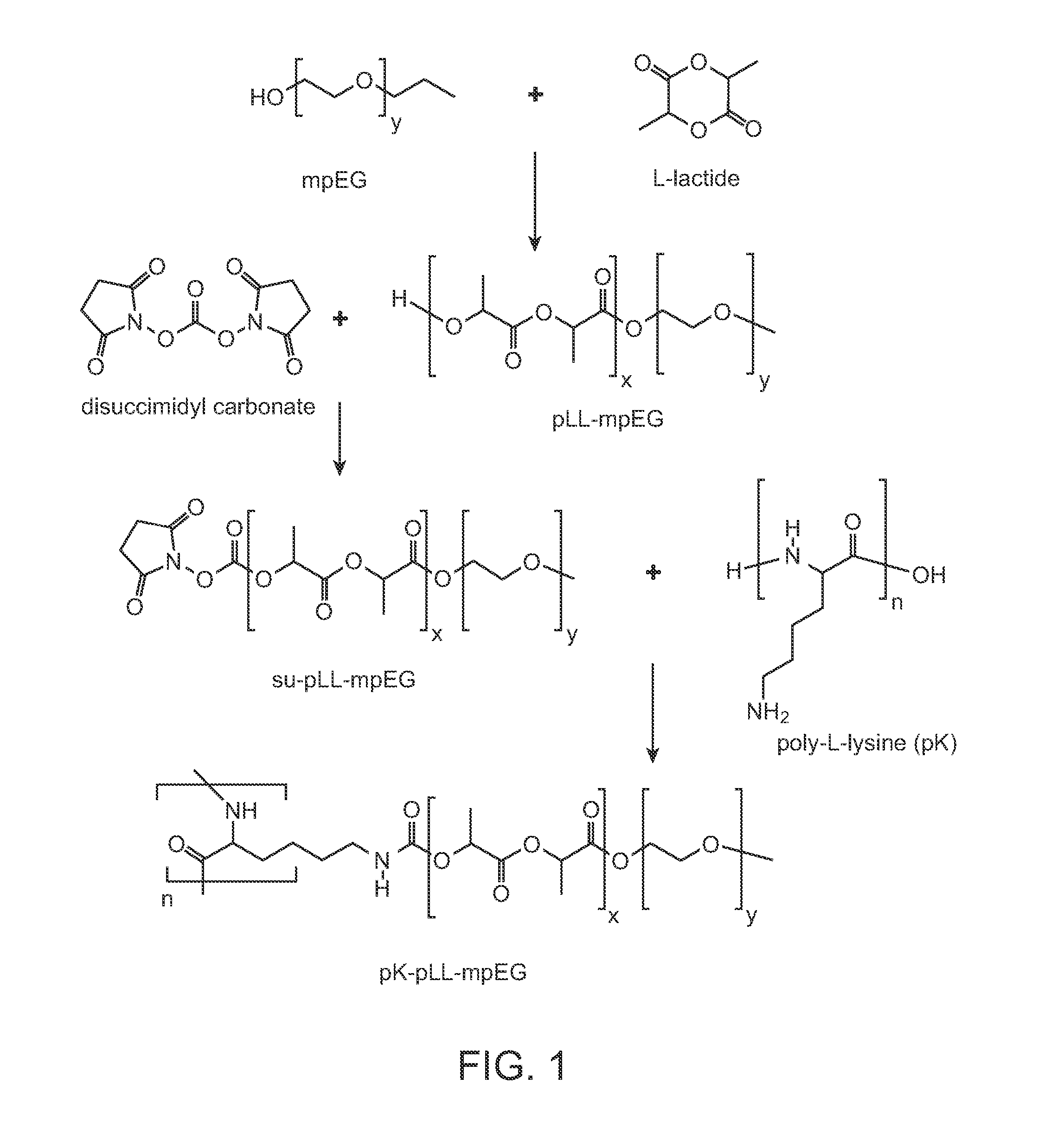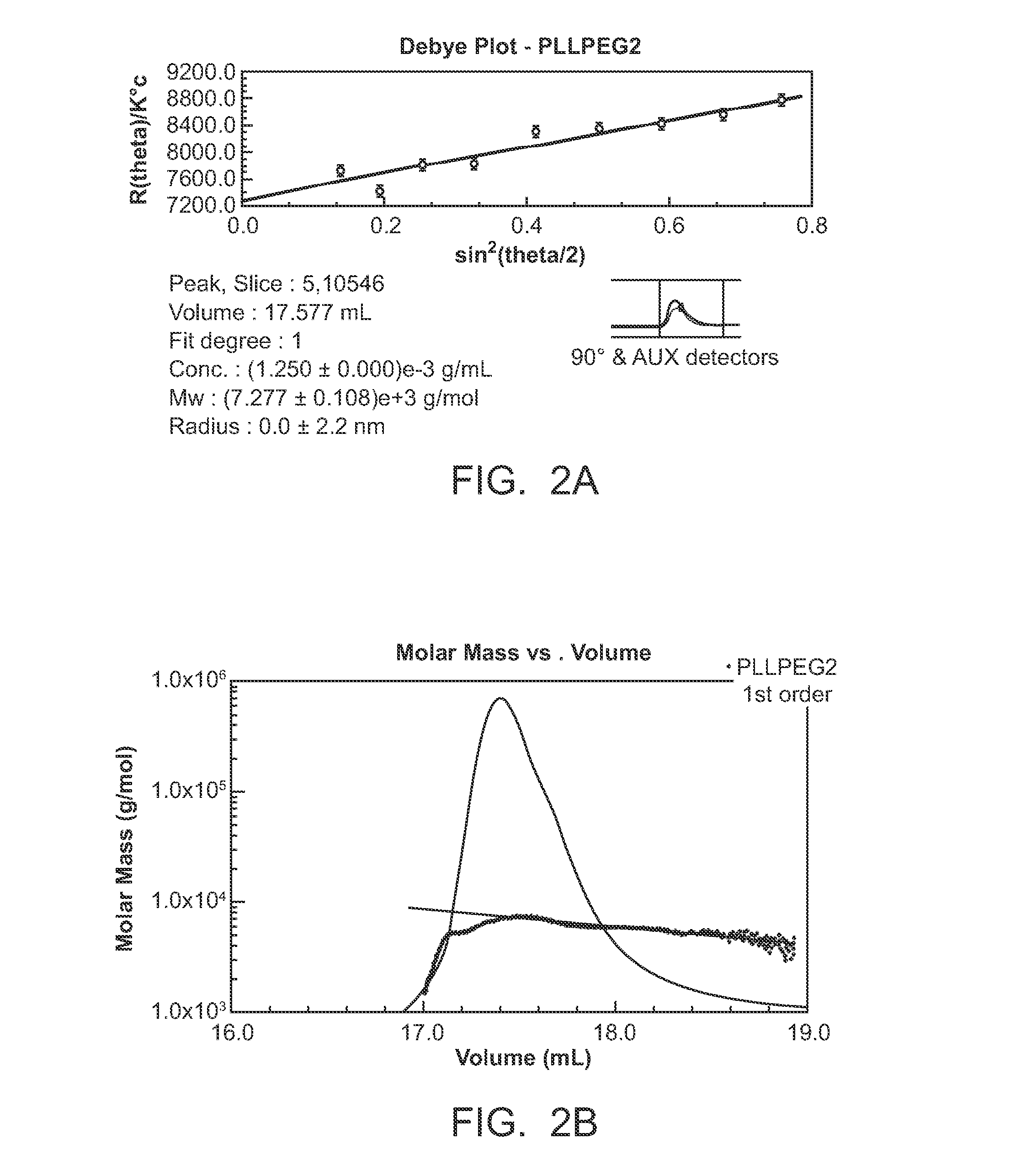Biodegradable Microspheres and Methods of Use Thereof
a technology of bioactive factors and microspheres, which is applied in the field of biodegradable microspheres, can solve the problems of unfavorable encapsulation of hydrophilic drugs and unfavorable encapsulation of bioactive factors
- Summary
- Abstract
- Description
- Claims
- Application Information
AI Technical Summary
Benefits of technology
Problems solved by technology
Method used
Image
Examples
example 1
Delivery of siRNA
[0138]This report describes the synthesis and characterization of poly(lysine-g-(lactide-b-ethylene glycol)) terpolymers for subsequent nanoparticulate packaging of siRNA. The positively charged polylysine (pK) core in the polymer comb serves to promote siRNA binding and condensation. In the grafted block copolymer, poly(ethylene glycol) (pEG) provides an uncharged hydrophilic shell that improves particle colloidal stability and prevents undesired protein adsorption. The intermediate hydrophobic poly-L-lactide (pLL) enhances complex stability in aqueous environment, facilitates premature siRNA condensation through hydrophobic interactions, and protects siRNA from intracellular degradation. Through the hydrolytic degradation of ester backbone, pLL also provides a mechanism of controlled siRNA release profile. Park, S. Healy, K. E. Nanoparticulate DNA packaging using terpolymers of poly(lysine-g-(lactide-b-ethylene glycol)). Bioconjugate Chem (2003) 14: 31119. The aim...
example 2
Ocular Delivery of an Active Agent
[0159]General features of various aspects of the invention, as well as examples relating to ocular delivery, are presented in FIGS. 11-19.
[0160]FIG. 11A depicts ocular drug delivery of atropine. As an example, a subject drug delivery system is injected as a sub-Tenon's implant at the posterior pole of the eye. Transscleral drug delivery can be achieved by this method. FIG. 11B depicts the structure of atropine.
[0161]FIG. 12 depicts poly(N-isopropylacrylamide-co-acrylic acid) (pNIPAAM-Co-AAC) hydrogel and poly(L-lactide)-methoxy-poly(ethylene glycol)) (pLL-MPEG) nanoparticles. The thermal properties of pNIPAAM-Co-AAC hydrogel are depicted in the left and right panels. The left panel shows that at room temperature, the hydrogel is a transparent viscous gel; the right panel shows that above 37° C., the hydrogel becomes opaque and becomes stiffer. Combining the pNIPAAM-Co-AAC hydrogel and pLL-MPEG nanoparticles (in which atropine is encapsulated) provid...
PUM
| Property | Measurement | Unit |
|---|---|---|
| temperatures | aaaaa | aaaaa |
| time | aaaaa | aaaaa |
| time | aaaaa | aaaaa |
Abstract
Description
Claims
Application Information
 Login to View More
Login to View More - R&D
- Intellectual Property
- Life Sciences
- Materials
- Tech Scout
- Unparalleled Data Quality
- Higher Quality Content
- 60% Fewer Hallucinations
Browse by: Latest US Patents, China's latest patents, Technical Efficacy Thesaurus, Application Domain, Technology Topic, Popular Technical Reports.
© 2025 PatSnap. All rights reserved.Legal|Privacy policy|Modern Slavery Act Transparency Statement|Sitemap|About US| Contact US: help@patsnap.com



